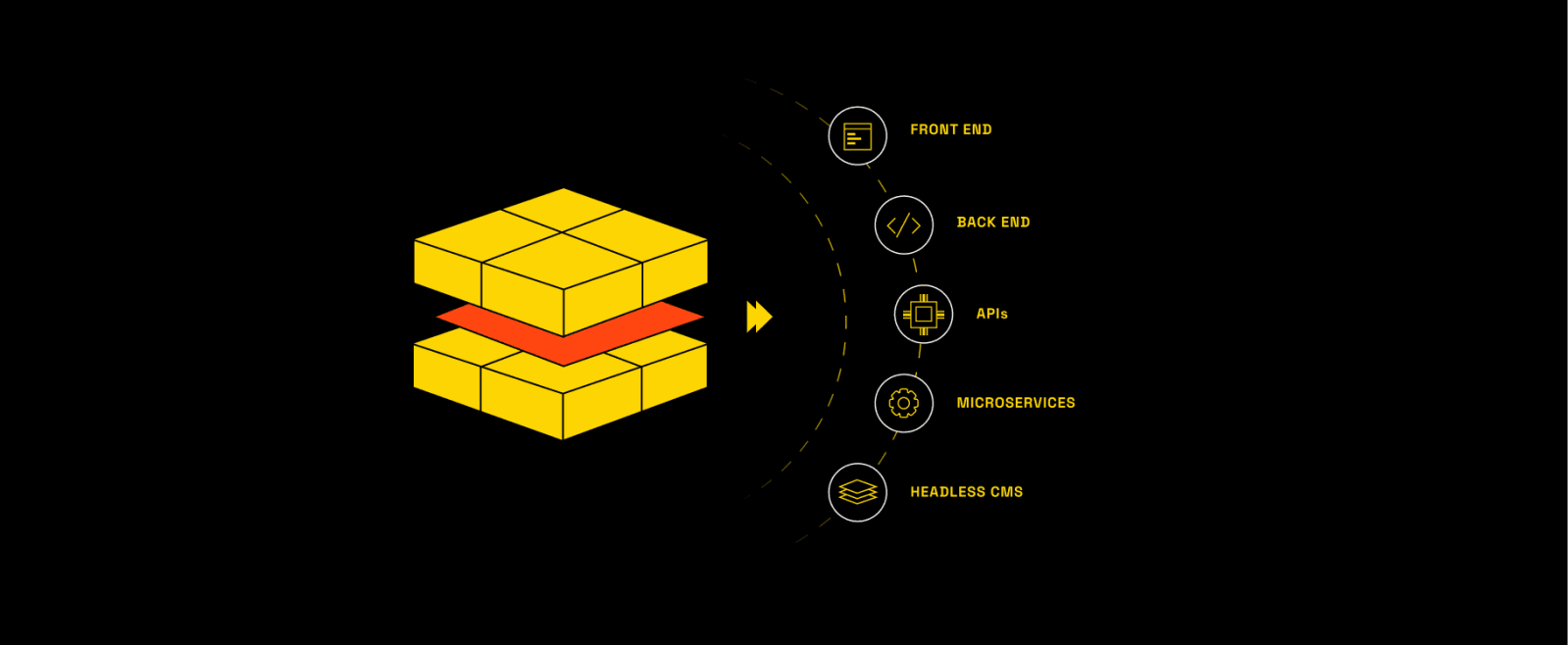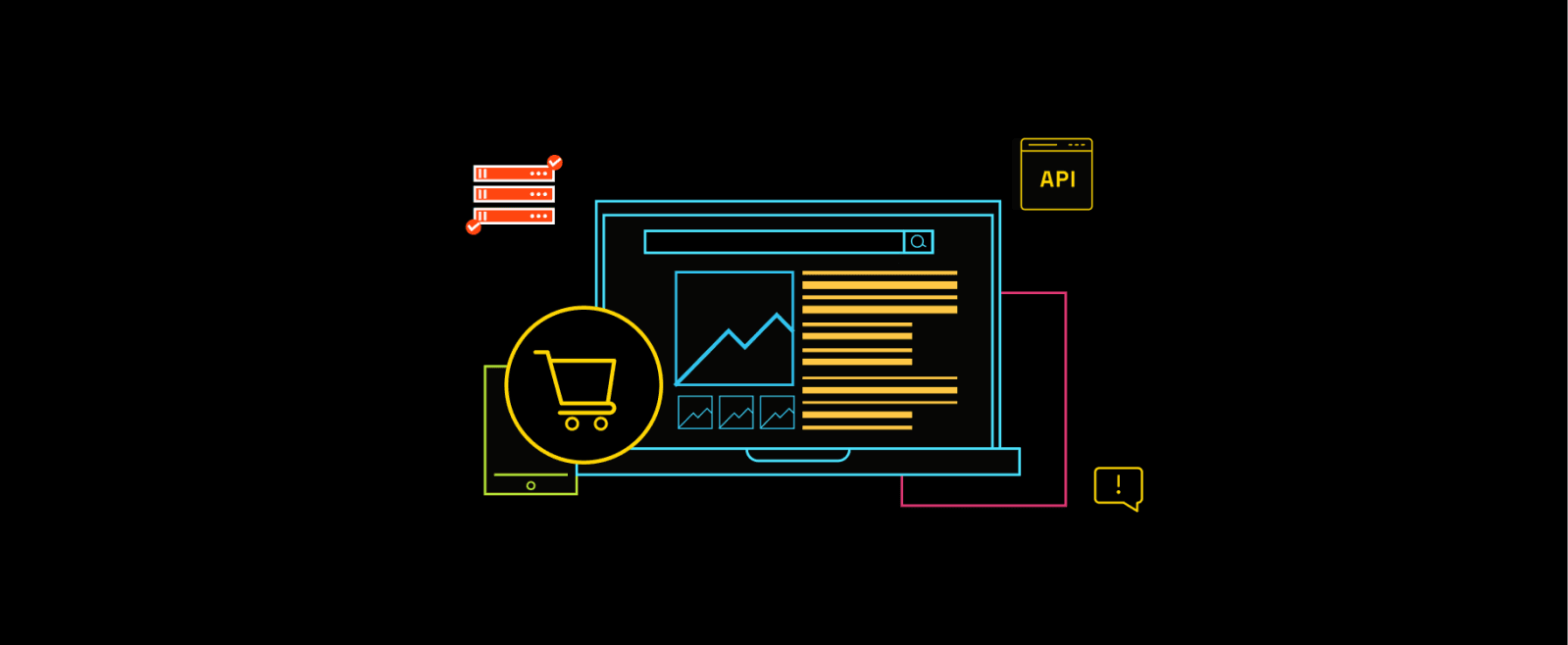A Step-by-Step Guide to Composable Commerce Migration
Enterprises are moving fast to modernize their commerce platforms and for good reason. Traditional monolithic systems are too rigid to support the speed, scale, and flexibility today’s markets demand. That’s why a growing number of global brands are investing in composable commerce migration: rearchitecting their tech stacks around modular, API-first services that can evolve with the business.
This isn’t just a technical upgrade. It’s a strategic shift in how commerce is built, operated, and scaled.
In this guide, we’ll break down:
-
Why monoliths are falling short for modern digital business
-
What composable commerce offers beyond just flexibility
-
How to plan a migration—from phased to big-bang models
-
What to expect during implementation (and how to get it right)
-
How to avoid common pitfalls that derail even well-funded migrations
-
What changes post-migration
Whether you're in the early stages of exploring options or already mapping out your replatforming strategy, this playbook will help you approach composable migration with clarity, speed, and long-term impact.
Why Monoliths Commerce Platforms Are Failing Enterprise Growth
Monolithic platforms were built for a different era—desktop-first, single-channel commerce with limited release cycles. But modern commerce demands faster innovation, channel fluidity, and the ability to roll out changes without redeploying the entire stack. In the Market Guide for Composable Commerce, Gartner predicts that by 2027, 60% of enterprise commerce platforms will be based on composable architecture, up from 30% in 2023. The pressure isn’t just to modernize but to stay competitive in a market where flexibility is a survival requirement.
The rise of MACH principles—Microservices, API-first, Cloud-native, and Headless—has made the rigid, interdependent nature of monolithic systems even more apparent. As enterprises expand into D2C, mobile-first, and marketplace-led growth, monoliths often become blockers to scale, speed, and customer experience consistency.
What Makes Composable Commerce a Migration-Worthy Investment
Composable commerce architectures address the strategic challenges enterprises face in scaling their digital commerce operations. The ability to select and integrate best-of-breed components means businesses can rapidly deploy new capabilities without overhauling their entire platform. This modular approach enables:
-
Targeted scaling of high-demand services without system-wide impacts
-
Quick integration of emerging technologies and channels
-
Independent updating and optimization of commerce components
-
Flexible vendor selection based on specific capability needs
This kind of modularity is what powers modern commerce migration strategies—helping enterprises replace legacy systems without disrupting daily operations.
Sennheiser’s migration to composable commerce is a standout example of speed, scale, and measurable ROI. In just 11 weeks, the audio brand replatformed 15 regional storefronts into a unified headless architecture using MACH principles and a composable stack—including Headless Shopify, Netlify, and Hygraph.
The results included a 136.7% increase in conversions, a 74.8% rise in add-to-carts, and a 60% reduction in QA time. By going composable, Sennheiser’s teams were able to launch updates daily, build localized experiences faster, and reduce their dependence on centralized IT. The migration wasn’t just faster; it created an architecture that’s now driving business agility across regions.
Key Business Outcomes from Migrating to Composable Commerce
How Composable Changes Day-to-Day Commerce: Operational Shift
Composable commerce changes how teams work—permanently. Instead of full-system updates, enterprises can now scale individual capabilities independently. During peak traffic (like holiday sales), a team can scale checkout performance without touching product content or search.
Release cycles shrink from quarters to sprints. Teams can roll out pricing changes, new payment methods, or checkout experiments independently—without downtime or cross-team dependencies.
Speed-to-Market and Innovation Across Channels
Post-migration, enterprises can innovate like never before. According to recent data, 45% of enterprises have already adopted composable front-ends for rapid channel experimentation. You gain the ability to:
-
Launch region-specific storefronts in days, not months
-
Test new features without risking backend stability
-
Customize experiences by market without duplicating core systems
-
Innovate across channels while maintaining backend consistency
Cost Efficiency, ROI, and Long-Term Platform Value
Composable migration impacts three major cost and efficiency levers:
-
Operational Costs: By selecting and scaling only necessary components, you reduce the overhead of unused features in monolithic platforms. Resources focus on high-impact areas rather than unnecessary complexity.
-
Development Efficiency: Post-migration, development teams spend less time on system maintenance and more on innovation. Technical resources are directed toward competitive advantages rather than legacy systems.
-
Future-Proof Investment: Composable stacks evolve gradually. You can replace underperforming tools or add capabilities without replatforming your entire stack.
Successful migrations show that real value isn't just in immediate operational gains—it lies in creating an architecture that evolves with your business needs. Enterprises can typically deploy new features 3-4 times faster post-migration while significantly reducing the total cost of ownership through selective scaling and targeted updates.
Leading brands report deploying new features 3–4x faster post-migration, while reducing their TCO by minimizing unused services and streamlining vendor contracts.
Strategic Approaches to Composable Commerce Migration
There’s no single “right” migration strategy—only the one that aligns with your technical readiness, team maturity, and business appetite for risk.
The Phased Migration Approach
This approach works well for teams already experimenting with headless components or operating in multi-region environments where full replatforming isn’t feasible.
Implementation Process: Gradual replacement of legacy components with composable services, using a strangler pattern
Best For: Large enterprises with complex interdependencies or limited in-house engineering bandwidth
Risk Profile: Low; preserves operational continuity, but requires strong governance to manage hybrid systems
Timeline Impact: Slower, but less disruptive
The Big Bang Migration Approach
This approach involves building an entirely new composable system and switching over in a single cutover event:
Implementation Process: Gradual replacement of legacy components with composable services, using a strangler pattern
Best For: Large enterprises with complex interdependencies or limited in-house engineering bandwidth
Risk Profile: Low; preserves operational continuity, but requires strong governance to manage hybrid systems
Timeline Impact: Slower, but less disruptive
How to Choose the Right Migration Model
Many enterprises also opt for a hybrid rollout—running the old and new systems in parallel while gradually shifting traffic. This gives teams time to validate new services in production while managing operational risk. Your selection should primarily depend on these critical factors:
| Decision Factor | Key Question | Favored Approach |
|---|---|---|
| Team Maturity | Do you have in-house microservices expertise? | Big Bang or Parallel |
| Business Continuity | Can you afford downtime or major disruptions? | Phased or Parallel |
| Platform Complexity | Are current systems deeply entangled? | Phased |
| Urgency to Replatform | Do you need to break from legacy fast? | Big Bang |
| Budget & Bandwidth | Can you fund two platforms temporarily? | Parallel or Phased |
Your migration model should reflect both your architectural ambition and operational constraints. The best migrations don’t just avoid risk—they position your team to scale capabilities confidently after go-live.
8-Step Framework for Implementing Composable Commerce Migration
A successful composable commerce migration isn’t just about the technology—it’s about how you orchestrate it. This step-by-step framework outlines how leading enterprises navigate complexity, reduce downtime, and scale with confidence.
1. Discovery and Requirements Analysis
-
Map your current commerce ecosystem, including integrations, dependencies, and workflows.
-
Interview cross-functional stakeholders (marketing, operations, engineering) to capture current friction points and future-state needs.
-
Conduct an assessment of existing systems.
-
Create a detailed gap analysis between the current state and desired composable architecture.
Governance checkpoint: Secure executive approval on identified gaps and resource allocation.
2. Architecture Planning and Vendor Selection
-
Design your target architecture based on MACH principles (Microservices, API-first, Cloud-native, Headless).
-
Shortlist vendors based on API maturity, integration flexibility, roadmap alignment, and SLA commitments.
-
Consider composable commerce migration services for additional support.
-
Create a vendor selection matrix with weighted criteria.
Key stakeholders: IT architects, procurement, and business technology leaders.
Governance checkpoint: Approval on architecture design and vendor selections.
3. Data Migration Strategy
-
Develop data mapping between legacy and new systems.
-
Establish data cleansing and validation protocols.
-
Plan phased synchronization across product catalogs, customer profiles, and order history—especially if legacy and new systems will coexist temporarily.
Key stakeholders: Data architects, integration specialists, business analysts.
Governance checkpoint: Approval on data migration approach and success criteria.
4. Technical Implementation Roadmap
-
Define service-level boundaries and API schemas across components like checkout, PIM, CMS, and pricing engines.
-
Establish testing protocols for each component.
-
Create rollback procedures for risk mitigation.
Governance checkpoint: Technical readiness review before each phase deployment.
5. Change Management and Training
-
Develop role-based training programs.
-
Appoint capability owners early to build product mindset across newly modularized teams.
-
Establish support channels and escalation procedures.
Key stakeholders: HR, training, department leads.
Governance checkpoint: Readiness assessment for user adoption.
6. Testing and Quality Assurance
-
Execute comprehensive testing across all components.
-
Validate integrations and data flows.
-
Stress-test across peak load conditions, validate rate limits, and run penetration testing to secure distributed APIs.
Key stakeholders: QA, security, business users.
Governance checkpoint: Quality gates review before production deployment.
7. Deployment and Go-Live
-
Execute deployment according to chosen approach.
-
Monitor system performance and user adoption.
-
Provide hypercare support during initial weeks.
Key stakeholders: Operations, support team, business users. Ecommerce business lead (to own KPIs during go-live window)
Governance checkpoint: Go/no-go decision based on readiness criteria.
8. Post-Implementation Optimization
-
Monitor KPIs and performance.
-
Gather user feedback and identify optimization opportunities.
-
Prioritize new capabilities like advanced search, subscriptions, or AI merchandising based on evolving customer needs.
Key stakeholders: Product owners, IT teams, business stakeholders.
Governance checkpoint: Regular review cycles for continuous improvement.
Enterprises following a structured implementation framework are more likely to achieve their migration objectives while minimizing business disruption.
Common Pitfalls in Composable Migrations (and How to Avoid Them)
Composable commerce opens new doors—but it also exposes weak links. Here’s where most migrations go sideways, and what seasoned teams do differently:
Mismanaging API Versions Breaks Everything
What happens: One service updates its contract. Another doesn’t. Suddenly your checkout or search is throwing errors.
What to do instead:
-
Define strict API versioning rules from Day 1.
-
Use schema validation and backward compatibility checks before any rollout.
-
Track API changes with automated diff tools and clear service-level changelogs.
2. Brittle Integrations = Hidden Time Bombs
What happens: You start with point-to-point integrations. It scales… until it doesn’t. One service fails, and everything collapses.
What to do instead:
-
Adopt event-driven architecture (EDA) early—decouple don’t duct tape.
-
Use message queues and retry patterns.
-
Add circuit breakers to prevent cascading failures across services.
3. Orchestration Overkill Before Stability
What happens: Teams try to build orchestration layers before core services are stable. Now you’ve got technical debt before production even launches.
What to do instead:
-
Nail service boundaries first.
-
Start with essential flows (checkout, PIM updates, cart events).
-
Layer in orchestration (e.g., frontend orchestration, workflow engines) only after production usage validates the need.
4. Security Gets Complicated, Fast
What happens: Every microservice and integration becomes a potential vulnerability—especially when security was an afterthought.
What to do instead:
-
Use centralized API gateway authentication (OAuth2, JWT).
-
Enforce TLS end-to-end, not just public-facing.
-
Automate compliance logging and enforce least privilege access.
-
Audit 3rd-party vendor SDKs like any internal service.
5. Service Ownership Is Vague or Missing
What happens: When something breaks, nobody knows who owns it. Features get stuck because cross-team dependencies aren’t mapped.
What to do instead:
-
Assign capability owners by domain (e.g., PDP, cart, pricing, etc.)
-
Codify ownership in docs, escalation policies, and sprint planning.
-
Make service maturity part of team OKRs.
6. Teams Try to “Go Fully Composable” Before They’re Ready
What happens: You start decomposing every piece of your stack—even the ones no one’s touched in 18 months. Everything slows down.
What to do instead:
-
Use the “minimum viable composability” rule.
-
Only break off what needs iteration or scaling now.
-
Don’t let tech structure outpace team structure.
Pro Tip: If you're scaling globally, assign regional ownership with shared core components. That gives you autonomy and cohesion across storefronts, currencies, and channels.
You don’t need a “perfect” system out of the gate—just a resilient one. Most composable failures stem from trying to do too much, too early, without clear ownership or communication.
How to Scale and Operate Your Composable Stack Post - Migration
Reaching go-live is the milestone. Scaling—and sustaining—that architecture is the mission. Here's how modern enterprise teams manage composable stacks in production.
1. Monitor Like an Engineering Org, Not an IT Department
Composable systems don’t fail quietly—they degrade piece by piece. To catch issues before they impact customers, enterprise teams monitor across:
-
UX metrics: Conversion rate, bounce rate, and LCP/TTFB per region
-
Service health: API latency, uptime SLAs, error rates by vendor
-
Business KPIs: Time-to-value for features, release cadence, and channel-specific ROI
Use observability tools like Datadog, New Relic, or Grafana with distributed tracing (e.g. OpenTelemetry) across services.
2. Organize for Ownership, Not Just Output
Your org chart has to evolve with your architecture. That means:
-
Assign capability owners by domain: PDP, checkout, pricing, subscriptions
-
Build autonomous squads that ship, monitor, and optimize each service
-
Embed business analysts into product teams to close the gap between tech and commercial performance
The goal is cross-functional teams that don’t just ship code—they own experience metrics.
3. Build a Continuous Maturity Loop
Composable systems don’t reach a “final state.” The highest-performing teams treat the stack like a product:
-
Quarterly stack reviews to deprecate unused vendors or APIs
-
Technical debt tracking as a first-class metric (track aging services or high-support modules)
-
Capability roadmap that aligns tech improvements with go-to-market strategies (e.g., expansion, bundles, subscriptions)
📈 Example: A CPG client may start with basic storefronts, then layer in AI search, CRM-driven personalization, and NetSuite integration over 12–18 months.
Conclusion
Composable migration isn’t about swapping one system for another. It’s about setting up an architecture that supports faster releases, scalable growth, and long-term flexibility across teams and markets.
The most successful enterprise migrations start with a clear understanding of business priorities, internal capabilities, and risk appetite. That’s where strategy comes in — not just implementation.
If you’re planning a move, we’ll help you map the right path forward — whether it’s phased, full-scale, or somewhere in between.
📩 Start your composable commerce migration with a tailored consult. Email- hello@coderapper.com to get in touch with our team.






